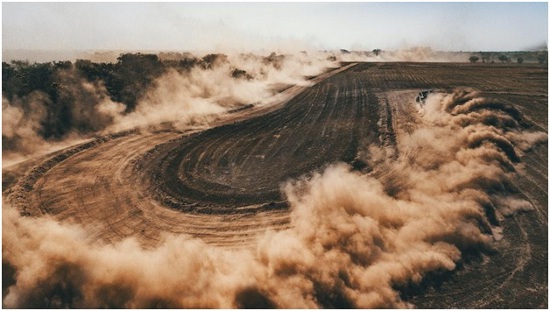If you’re an ATV enthusiast, you know the thrill of off-roading on your trusty all-terrain vehicle. However, with great power comes great responsibility, and one of the most significant challenges you might face is overheating. An ATV meltdown can be a nightmare, especially if you’re miles away from civilization. Understanding the common reasons for overheating can help you avoid this scenario altogether. In this article, we’ll explore the top 5 reasons why your ATV might overheat and what you can do to prevent it. From issues with the cooling system to improper use, we’ll cover everything you need to know to keep your ATV running smoothly and avoid an overheating meltdown. So, buckle up and get ready to learn how to keep your ATV in top shape!


What is an ATV?
An ATV or all-terrain vehicle is a motorized vehicle designed for off-road use. They are typically four-wheeled and are equipped with large, low-pressure tires to provide traction on rough terrain. ATVs are popular among outdoor enthusiasts, farmers, and ranchers who use them for transportation and work purposes. They are also used for recreational purposes, such as racing and off-roading.
Understanding the risks of overheating
Overheating is a common problem that can occur with any motorized vehicle, including ATVs. An ATV that is allowed to overheat can cause significant damage to important atv parts such as the engine, transmission, and other components. Overheating can also be dangerous for the rider, as it can cause the engine to stall or catch fire. To avoid these risks, it is essential to understand the common reasons for ATV overheating and take steps to prevent them.
Common reasons for ATV overheating
Insufficient cooling system
The cooling system of an ATV is designed to keep the engine at a safe operating temperature. If the cooling system is not functioning correctly, the engine can overheat. The most common causes of an insufficient cooling system are a damaged or clogged radiator, a malfunctioning water pump, or a broken thermostat. These problems can prevent the coolant from flowing through the engine, causing it to overheat.
Blocked radiator or cooling fan
The radiator and cooling fan of an ATV work together to regulate the engine’s temperature. If the radiator or cooling fan is blocked by debris, dirt, or mud, it can prevent the engine from cooling properly. This can cause the engine to overheat, leading to serious damage. It is essential to keep the radiator and cooling fan clean and free of debris.
Low coolant levels
Coolant, also known as antifreeze, is a critical component in the ATV’s cooling system. It circulates through the engine, absorbing heat and transferring it to the radiator to be cooled. If the coolant levels are low, it can cause the engine to overheat. Low coolant levels can be caused by leaks or evaporation. It is essential to check the coolant levels regularly and top up as needed.
Faulty thermostat or water pump
The thermostat and water pump work together to regulate the flow of coolant through the engine. If either of these components is faulty, it can cause the engine to overheat. A malfunctioning thermostat can cause the engine to run too hot or too cold, while a broken water pump can prevent the coolant from circulating through the engine. Regular maintenance and inspections can help prevent these problems.
Riding in extreme conditions
Riding an ATV in extreme conditions, such as high temperatures, steep inclines, or deep mud, can cause the engine to overheat. These conditions put additional strain on the engine and cooling system, causing them to work harder than usual. To prevent overheating in extreme conditions, it is essential to take breaks and allow the engine to cool down periodically.
Tips to prevent ATV overheating
Regular maintenance and inspections
Regular maintenance and inspections can help prevent ATV overheating. This includes checking the coolant levels, inspecting the radiator and cooling fan for damage or blockages, and ensuring that the thermostat and water pump are functioning correctly. Regular maintenance can also help identify and address potential problems before they become serious.
Avoid riding in extreme conditions
Avoiding riding an ATV in extreme conditions, such as high temperatures or deep mud, can help prevent overheating. If you must ride in extreme conditions, take breaks and allow the engine to cool down periodically.
Keep the radiator and cooling fan clean
Keeping the radiator and cooling fan clean and free of debris can help prevent overheating. Use a brush or compressed air to remove any dirt or debris that has accumulated on the radiator or cooling fan.
Use high-quality coolant
Using high-quality coolant can help prevent overheating. Cheap or low-quality coolant can break down over time, causing it to be less effective at regulating the engine’s temperature. It is essential to use the recommended type of coolant for your ATV and to replace it regularly.
Avoid overloading your ATV
Overloading your ATV can cause it to work harder than usual, putting additional strain on the engine and cooling system. Avoid carrying more weight than your ATV is designed to handle.
Conclusion
Overheating is a common problem that can occur with any motorized vehicle, including ATVs. Understanding the common reasons for ATV overheating and taking steps to prevent them can help keep your ATV running smoothly and avoid an overheating meltdown. Regular maintenance, avoiding extreme conditions, and using high-quality coolant are all essential in preventing overheating. By following these tips, you can keep your ATV in top shape and enjoy the thrill of off-roading with confidence.
















